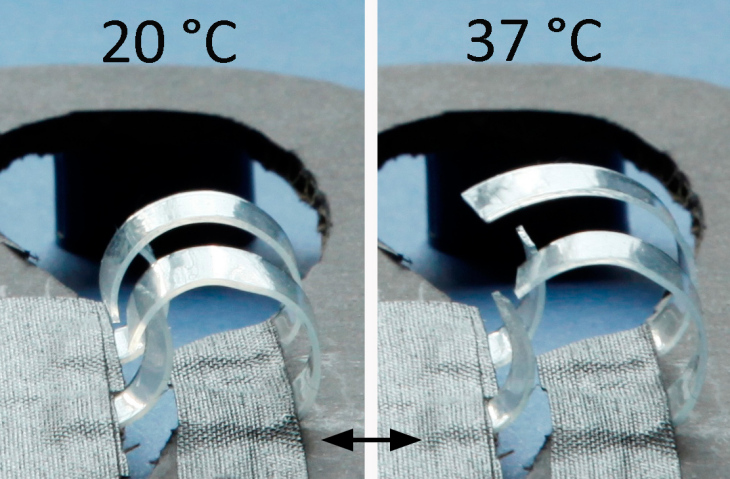Reversible shape shifters sensitive to temperature variations between room and body temperature
Repeated temperature variations between room and body temperature cause reversible shape shifts in an elastic polymer providing high innovation potential in assistive home-care equipment for elderly people or in minimally-invasive surgery.

Potential application for a copolymer network comprising reversible shape shifts caused by temperature variations between body and room temperature [Foto: HZG]
The challenge in the design for this material was to equip the polymer with components determining the geometry of the shape shift and at the same time to integrate actuator elements, which enable the reversible movement. For this purpose, two types of chain segments have been incorporated into the network architecture.
The fundamental principle, how the copolymer network remembers the geometry of the shape shifts, is of particular interest: The material`s shape changes are caused by the temperature dependent organization of the crystallizable segments in actuator domains. The molecular orientation within these domains is maintained also in the molten state. In this way, the geometry of the reversible movement is defined.
Potential applications are, for example, reversible closure systems for shoes or clothes. Both products belong to the field of gerontechnology, an interdisciplinary research area, addressing the medical needs of elderly people. Another potential application area are reversibly folding guide wires for e.g. nerve electrodes in the field of minimally-invasive surgery.
Details about this new material will be presented 16 March 2015 in the scientific journal Macromolecular Rapid Communications in the article "Copolymer Networks From Oligo(e-caprolactone) and n-Butyl Acrylate Enable a Reversible Bidirectional Shape-Memory Effect at Human Body Temperature" by M. Saatchi, M. Behl, U. Nöchel and A. Lendlein. DOI: 10.1002/marc.201400729:
Contact
Institute of Biomaterial Science
Helmholtz-Zentrum Geesthacht
Kantstr. 55, 14513 Teltow, Germany
http://biomaterials.hzg.de
Institute of Biomaterial Science
Helmholtz-Zentrum Geesthacht
Kantstr. 55, 14513 Teltow, Germany
http://biomaterials.hzg.de
